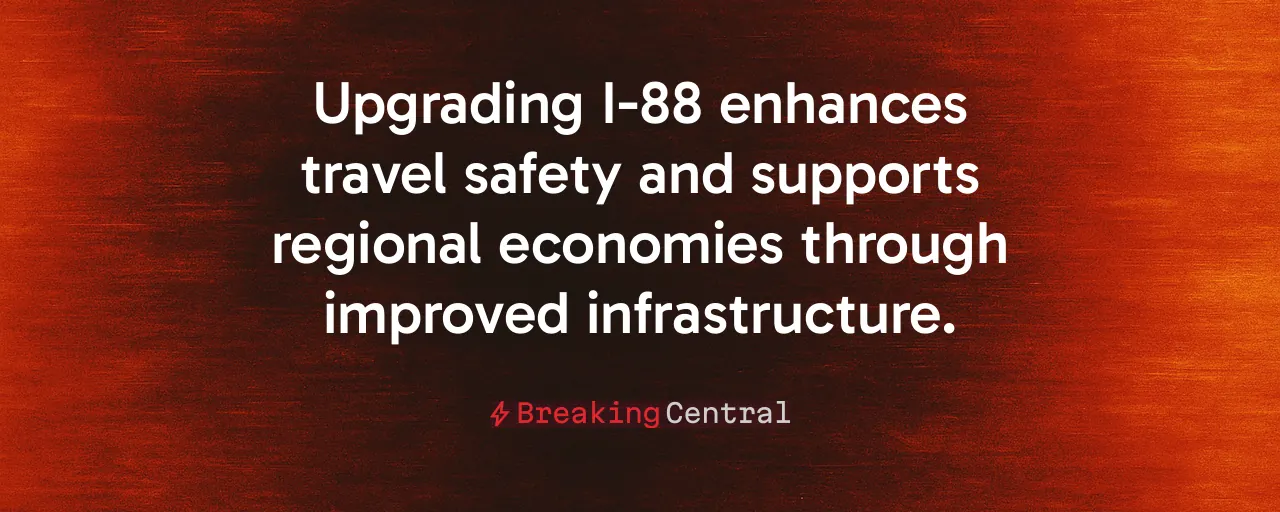Why I-88 Matters to Every New Yorker
Interstate 88 winds through the heart of upstate New York, linking Albany to Binghamton and carrying families, farmers, and tourists to places like Cooperstown's Baseball Hall of Fame. Governor Kathy Hochul's plan to invest $42 million in resurfacing 40 lane miles in Schoharie and Otsego counties is a practical step toward safer, smoother travel. The projects, set to wrap by 2026, will repair bridges, fix culverts, and pave over aging concrete. For small towns relying on this highway, the benefits are clear: better roads mean more visitors and stronger local businesses.
Yet, as welcome as these upgrades are, they come with a question. Are we getting the most value for our tax dollars? The plan, partly funded by the 2021 Bipartisan Infrastructure Law, will create 200 jobs and boost tourism by an estimated 8 percent. That's worth celebrating. But big projects often carry hidden costs, bureaucracy, inflated labor bills, and federal strings. New Yorkers deserve to know their money is being spent wisely, with every dollar delivering value.
The stakes are high. Since 1960, the cost of building a mile of interstate has soared fourfold, driven by red tape and outdated rules. I-88's overhaul is a chance to break that cycle. By focusing on what is essential, safe roads and local jobs, we can deliver results without draining wallets. Anything less would be a disservice to the communities this highway serves.
A Smarter Way to Build
A fiscally responsible approach starts with working within our means. In 2021, budget-conscious leaders proposed funding infrastructure by redirecting existing resources, like $500 billion from unspent pandemic funds, instead of raising taxes. New York could apply this logic to I-88. Toll revenues or sales of underused state assets could cover much of the $42 million cost, reducing reliance on federal grants. This keeps control local and accountability high.
Cutting red tape is just as critical. Federal labor rules, like Davis-Bacon wage mandates, inflate costs by more than 20 percent. Lengthy environmental reviews can stall projects for years. For I-88's $15.7 million and $26 million segments, streamlining these hurdles would save money and time. Local contractors, who understand the region's needs, should lead the work, ensuring local priorities guide the process. Why let distant regulations dictate how we fix our roads?
History offers a guide. The 1956 Interstate Highway Act built 41,000 miles of roads using user fees, like gas taxes, without piling on debt. Today's $591 billion infrastructure law, while ambitious, risks waste through its sprawling scope. I-88's projects are small by comparison, but they're a chance to show how targeted, efficient spending can deliver lasting value. Local priorities should drive the process, guided by regional needs.
Big Spending's Blind Spots
Some defend massive federal investment, pointing to the infrastructure law's tens of thousands of jobs in 2024 and 207,000 miles of repaired roads. For I-88, they argue $42 million is a modest sum for safer travel and economic growth. But this perspective overlooks a key flaw: spending without discipline leads to waste. Without tight oversight, projects like these can balloon beyond their budgets, leaving taxpayers to pick up the tab.
Supporters of large-scale funding often tie it to broader goals, like the $8.7 billion PROTECT program for climate-resilient infrastructure. They claim these extras enhance public safety and equity. Yet, for I-88, the focus should stay narrow: fix the pavement, strengthen the bridges, and keep costs down. Adding layers of climate or social mandates risks driving up expenses without clear benefits. Why complicate a straightforward job with unnecessary add-ons?
The New Deal's Public Works Administration built 34,000 projects by sticking to essentials. Today's approach, with its tangle of federal rules, drifts from that model. I-88's upgrades can succeed by returning to basics: deliver quality roads, support local workers, and respect taxpayer dollars. Anything more feels like government overstepping its bounds.
Paving a Better Path Forward
The I-88 projects hold real promise. Done well, they'll make travel safer and boost upstate economies. Done poorly, they'll join the long list of overpriced government ventures. New Yorkers need leaders who choose efficiency over excess, empowering communities to shape their own infrastructure while keeping costs in check.
The path ahead is clear. Fund projects with local resources, like tolls or asset sales. Slash bureaucratic delays to speed up work. And reject federal mandates that inflate budgets without adding value. With a $9.1 trillion national infrastructure gap looming by 2033, according to the American Society of Civil Engineers, we can't afford to waste a penny on poorly managed plans.
Interstate 88 is a critical artery and a test of our priorities. By fixing it with fiscal discipline and local focus, we can prove that practical solutions work. Let's build smart, deliver results, and show the nation how to get infrastructure right.
